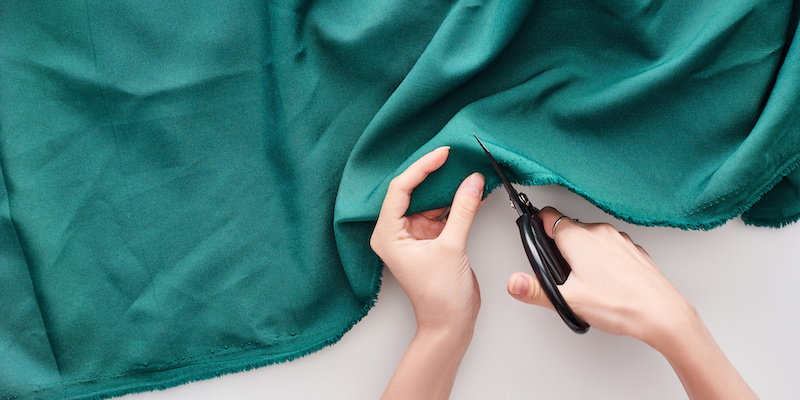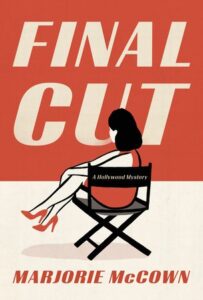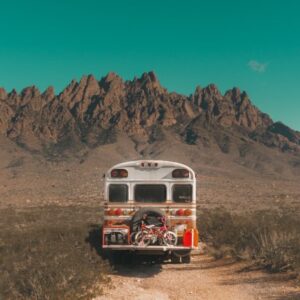The inspiration for FINAL CUT, my murder mystery set behind-the-scenes of a Hollywood movie shoot that’s plagued by a string of disasters, came from my 27 years working as a costume designer and key costumer in the film industry — and realizing all the things that can go horribly wrong on a movie set, especially one that’s run without proper safety oversight.
Since reading murder mysteries is (without question) my own favorite form of entertainment, I knew before I started writing that would be my genre of choice as an author. And I just thought that a movie set teetering on the brink of chaos was a good backdrop for a mystery because as the author, I can present the circumstances in a way that forces the characters in the story ask, “Are these accidents, or are they intentional attempts to sabotage the movie and cause harm to the cast and crew?” And yes, many of the situations I write about are based on real-life incidents. (That’s one of the first questions people ask me when I talk about the book.)
Another question I’m frequently asked is, “How did you make the transition from costume designer to murder mystery author?” My answer to that surprises a lot of people: to me, that shift felt like a very natural progression. I always say I’ve been a storyteller for my entire professional life, but I started out on the visual side of the craft.
That’s because costume design is all about storytelling; that’s what sets it apart from fashion design. Fashion is about satisfying the tastes of the commercial marketplace while costume design is about using clothing to help tell a story about a particular set of characters in a particular situation at a particular point in time.
But full disclosure: I dreamed of being a writer long before I had any idea that costume design was a profession I could pursue. I wrote my own fan fiction for The Wind in the Willows when I was eight years old, not that I knew back then “fan fiction” was a thing. I only knew I loved that book, and I was sad when it ended. So I decided I was going to write my own adventures for Badger and Mole.
I never stopped writing, but in college I became seriously interested in theater and was introduced to costume design as part of the curriculum. Before that, I didn’t know that such an occupation existed, and right away I was hooked because it combined so many of my interests—art, history, and obviously theater, the live action version of storytelling. I was also attracted to costume design because as a young person starting out in the workplace, I liked the idea of working in collaboration with a group of creative people toward a common goal. For me, that felt less scary than trying to make a living as a writer.
After I graduated from the University of Virginia with my BA in Theater, I moved to New York City. I was 22 years old and had never lived in a city larger than Charlottesville, Virginia. To say I was a bit overwhelmed for the first year would be an understatement. Alice tumbling down the rabbit hole to Wonderland or Dorothy stepping into the Technicolor world of Oz come to mind as comparisons. At the same time, I was absolutely entranced by my new home. New York has an energy that seeps into your pores and becomes part of you; it happens organically.
I began my design career as an assistant to costume designers who were already well established, like Patricia Zipprodt, a brilliant costume designer whose credits included the original productions of Fiddler on the Roof, Pippin, Cabaret, Chicago, and Sunday in the Park with George (to name only a few.) The training I received by working with talented people such as Patricia gave me a breadth of skills that served me throughout my career.
After a few years, I began to design my own work at theaters and opera companies all over the country, including the New York City Opera at Lincoln Center. Beverly Sills was the artistic director at that time, and she was one of my early professional mentors.
I loved my work as a theater designer, collaborating with the directors of the various productions, the other designers, the artisans in the costume shops who made the clothing, and the actors. But in order to support myself in New York City, I was forced to double and triple-up on jobs, sketching for an opera in Minnesota at the same time a musical I was designing in Virginia was being made in the costume shop in Richmond, while technical rehearsals were in progress for an opera I designed at Lincoln Center. I still loved my work—the sketching, choosing fabrics, being in the costume shops, doing the actors’ fittings, seeing all our work come together on stage on opening night—that was thrilling. But I sometimes felt I couldn’t do my best work when my focus was split among several projects. I was grateful for the jobs, but I would have liked to be able to do just one job at a time.
Then about 13 years into my career as a theatrical designer, I started to think about working in movies. I’m curious by nature: I’m always ready to learn or try something new if it sounds interesting. And there was this voice at the back of my mind that said, “If you want to see what it’s like to work in film, don’t put it off. Dive in and give it a try.”
So even though I had become one of those smug New Yorkers who said I’d never move to the West Coast, that’s exactly what I did. I packed a bag and put my cat Mickey in his sherpa travel tote, and we moved to Los Angeles (although I didn’t let go of my NY apartment for 2 years just in case my Hollywood experiment didn’t pan out.)
But as luck would have it—and the luck of good timing certainly played a role — I was given a wonderful opportunity more quickly than I could have hoped or imagined. Two weeks after I landed in Los Angeles, I was offered a job on an A-list feature film, The Addams Family, as assistant costume designer to Ruth Myers, and I was accepted as a member of the film union, the Costume Designers Guild. I will say that my theatrical training prepared me to take advantage of this opportunity, though I soon found I had a long list of new skills that I needed to learn—pronto.
Movies and stage productions are very different from each other in the ways they’re made. In the theater, all the costumes have to be ready by opening night, and you get to see the finished product—the show performed onstage in front of an audience. Movies are made piecemeal, one shot at a time. A single scene is often made up of many separate shots that may be filmed on different days and possibly over the course of many months. And you don’t get to see the final product until the cast and crew screening, long after you’ve finished working on the movie.
But as I became familiar with that piecemeal way of putting a story together, I began to develop a different perspective about the fundamental process of storytelling. I had the good fortune to work on several amazing projects that turned out to be good movies, including Forrest Gump, Apollo 13, The Firm, A Bronx Tale, The Aviator, Wag the Dog, Hairspray, Angels & Demons, The Curious Case of Benjamin Button, and X-Men Days of Future Past. I learned a lot on the sets of those movies, watching the story being created shot by shot in 3 dimensions. And I also learned by breaking down the screenplays I worked on, as I charted the scenes and costume changes on paper. Those experiences gave me a new awareness of and appreciation for story structure.
That’s probably another reason the transition from costumer to writer felt seamless (no pun intended.) Now I look at the writing process more cinematically, in a way. I’m an outliner, but I think of my outline almost like the daily shot list of camera set-ups on a movie. When I’m writing, I have the movie version playing in my head, though there are always reshoots and plenty of editing required along the way.
One more reason the shift from costumer to author felt natural to me: I finally listened to my very wise literary agent, Ann Collette, who urged me repeatedly to “write what I know.” After all, I spent nearly 30 years doing the research. And I have to admit the unique world of moviemaking provides a vivid backdrop for an endless number of stories that could bubble up from that creative stew of people, activities, and locations. To quote the actor Ben Mendelsohn, “Crewing and being on film sets is kind of like being in a carnival, with carnie folk.”
Sounds like a good opening line for a novel, doesn’t it?
***


















